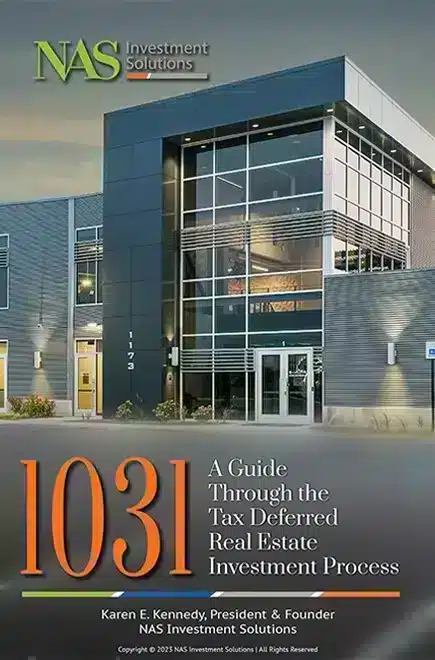The Power of Diversification
Why It’s More Important Than Ever
Investment portfolio diversification is the practice of spreading investments across various asset classes to reduce risk and enhance the potential for returns. It’s often said, “Don’t put all your eggs in one basket.” This time-tested principle is especially relevant in today’s volatile financial markets.
When we diversify, we balance the potential highs and lows of different investments. Stocks might offer high returns but come with significant risk and volatility. Bonds provide stability but might not deliver the desired growth, especially in a low-interest-rate environment.
Understanding Delaware Statutory Trusts (DSTs): A Primer for Investors
A Delaware Statutory Trust (DST) is a legal entity that enables investors to own fractional interests in large-scale commercial real estate properties. Instead of directly owning the properties, investors purchase shares of the trust that owns them. This structure is popular for 1031 exchanges, allowing investors to defer capital gains taxes by reinvesting proceeds from property sales.
DSTs offer passive investment opportunities with professional management and add a layer of diversification to investment portfolios. They provide individuals with the ability to own fractional interests in commercial real estate without the hassle of direct property management. This structure can yield stable income, tax benefits, and potential appreciation, making DSTs an attractive option for investors looking to diversify beyond traditional stocks and bonds. Also keep in mind upon sale of this investment the investor can exchange again and again push out the payment of capital gains, if they choose to do so.
Given today’s economic environment, with high market volatility and low interest rates, investing in DST commercial real estate can provide a more stable and diversified investment portfolio. This shift can help investors achieve better risk-adjusted returns and take advantage of the unique benefits offered by DSTs.
Stable Income and Tax Benefits: The DST Advantage

When planning a resilient investment strategy, understanding the stability and tax benefits of different asset classes is essential. Traditional stocks and bonds, while popular, come with their own set of risks and tax implications that can impact overall returns. Delaware Statutory Trusts (DSTs), however, offer a distinct advantage in terms of stable income and tax efficiency. With steady income, low correlation with stock and bond markets, potential for tax deferral, and professional management, DSTs present a compelling option for investors seeking both financial stability and diversification.
Benefits of DSTs Compared to Traditional Investments
Income Stability
Stocks and Bonds: Income from stocks comes from dividends, which can be cut during economic downturns. Bonds also provide fixed interest payments but are subject to credit risk.
DSTs: Offer steady income through lease agreements with tenants, providing more predictable cash flow.
Diversification Benefits
Stocks and Bonds: Both asset classes are subject to market volatility and economic sensitivity.
DSTs: Low correlation with stock and bond markets, offering diversification benefits. Diversification across property types and locations reduces overall portfolio risk.
Tax Advantages
Stocks and Bonds: Subject to capital gains tax and dividend tax.
DSTs: Potential for tax deferral through 1031 exchanges and depreciation benefits.

Professional Management
Stocks and Bonds: Requires active management and constant monitoring.
DSTs: Managed by experienced real estate professionals, reducing the management burden for investors.
Inflation Hedge
Stocks and Bonds: May not provide a strong hedge against inflation due to their sensitivity to interest rates and economic conditions.
DSTs: Real estate tends to increase in value during inflationary periods, making it an effective hedge against inflation.
Navigating Today’s Economic Environment with DST Investments
The stock market can experience high volatility and uncertainty driven by inflation and interest rate hikes, while the bond market can face challenges with low interest rates and the potential for rising rates that adversely affect bond prices. Amidst this economic turbulence, commercial real estate, particularly in sectors like multifamily housing, continues to demonstrate steady demand.
Stock Market: High volatility and uncertainty due to economic factors like inflation and interest rate hikes.
Bond Market: Low interest rates and potential for rising rates, affecting bond prices negatively.
Commercial Real Estate: Steady demand for commercial properties, especially in sectors like logistics and multifamily housing.
A Scenario of Success: How Jean Transformed Her Portfolio with DSTs
Take the case of Jean. Jean had always been a savvy investor with a keen eye for spotting opportunities in the stock market. Over the years, she had built a robust portfolio of tech stocks that had yielded substantial returns. However, as the market began to show signs of increased volatility, Jean felt it was time to reassess her investment strategy.
One evening, after a particularly tumultuous trading day, Jean sat down with a cup of coffee and reflected on her long-term financial goals. She realized that while stocks had been profitable, they also came with a level of risk that she was no longer comfortable with. She wanted a more stable and predictable source of income, something that could weather market fluctuations and provide consistent returns.

Jean reached out to her trusted financial advisor, who introduced her to the concept of Delaware Statutory Trust (DST) investments, specifically in multifamily commercial real estate. The idea of investing in residential properties within a DST structure intrigued Jean. It offered the potential for steady rental income from multiple tenants, tax deferral benefits, and the added advantage of not having to manage the properties directly.
After conducting thorough research and evaluating various DST options, Jean decided to sell a portion of her tech stocks and reinvest the proceeds into a multifamily apartment DST in a growing urban area. The property was strategically located near major employers, public transportation, shopping centers, and schools, ensuring high demand and low vacancy rates.
Months later, the rental income from the multifamily properties was consistent and reliable, providing her with a stable cash flow that was largely insulated from the stock market’s ups and downs. Additionally, the appreciation in property values added an extra layer of security to her investment.
Jean’s decision to transition from a volatile stock market to a dependable DST multifamily commercial real estate investment not only provided her with a more stable and diversified portfolio but also aligned better with her long-term financial goals. She was able to achieve a balance between income generation and capital preservation, ensuring a more secure financial future.










